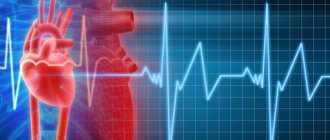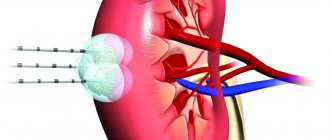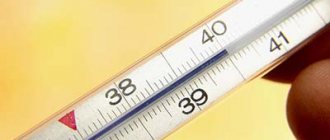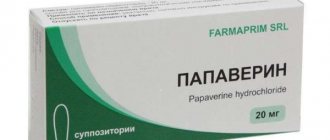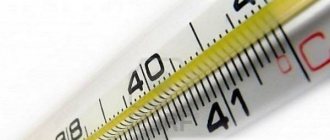Cerebral ischemia is a condition that occurs as a result of insufficient oxygen supply to brain tissue. Cerebral ischemia in newborns is also commonly called hypoxic-ischemic encephalopathy (HIE), perinatal hypoxic or hypoxic-ischemic brain damage.
The main reason that leads to cerebral ischemia is oxygen deficiency (hypoxia). Hypoxia leads to the fact that metabolic changes and disorders of varying severity begin to occur in brain tissue, which in turn can lead to the death of neurons, the development of necrosis and other severe brain damage.
Causes of perinatal hypoxia:
- Intrauterine fetal hypoxia. This condition most often occurs due to a violation of the uteroplacental (blood flow from the uterus to the placenta is disrupted) or fetoplacental (from the placenta to the fetus) blood flow;
- Asphyxia of a child during childbirth (intranatal) or immediately after birth (postnatal);
- Respiratory distress syndrome (RDS);
- Repeated attacks of apnea (stopping breathing);
- Congenital pneumonia or aspiration syndrome in a newborn;
- Congenital heart disease, hemodynamically significant patent ductus arteriosus (PDA), long-term persistence (not closure) of fetal communications;
- Disturbances of systemic hemodynamics in a newborn, which lead to a sharp drop in systemic blood pressure and a decrease in cerebral blood flow.
Treatment of childhood cerebral ischemia
Diagnostics
Cerebral ischemia is diagnosed almost immediately after birth based on examination of the child and laboratory tests. Basic methods:
- Apgar score;
- reflex testing;
- measurement of pulse, pressure;
- determination of respiratory rate;
- blood tests - for general indicators, electrolytes, coagulability, carbon dioxide level (in hypoxia it is increased).
If moderate or severe ischemia is suspected, diagnostic procedures are performed to assess the state of the brain and its functional activity, as well as prescribe adequate treatment:
- Magnetic resonance imaging;
- electroencephalography;
- Ultrasound of the brain (not very informative for encephalopathy).
Treatment
The treatment strategy for cerebral ischemia in children depends on the severity of the condition.
The goal of treatment is to maintain important body functions, normalize blood circulation in the brain and create conditions for the restoration of damaged areas of the central nervous system.
Mild degree
Mild ischemia does not require drug treatment. As a rule, the child is discharged from the maternity hospital in a standard manner, but is monitored by a neurologist. Most often, massage is prescribed, which has a beneficial effect on muscle tone and relieves nervous excitability. It must be carried out by a specialist. Up to 4 courses of massage are required during the first year of life.
Moderate and severe
The algorithm of care for moderate and severe cerebral ischemia is determined by the child’s condition. If he cannot breathe on his own, he is put on a ventilator and transferred to the intensive care unit. The baby’s condition is constantly monitored using special devices: heartbeat, hemoglobin levels, glucose, gases, and so on are monitored.
Most often, moderate ischemia is accompanied by damage to small areas of the brain, so the child can breathe on his own after 2-3 minutes of resuscitation. He is in the ward with his mother, but doctors are closely monitoring his condition. A newborn may spend 3-4 weeks in the hospital.
The main groups of medications that are used to treat cerebral ischemia:
- vasodilators - improve blood supply to the brain;
- nootropics – stimulate brain activity;
- anticonvulsants – stop seizures;
- heart medications – normalize heart function;
- vitamins – have a general strengthening effect and also contribute to the restoration of nerve fibers.
In addition, in the last few years, hypothermic therapy has been practiced - cooling the child’s head 3-4°C below normal. Studies show that this technique prevents necrosis of brain cells.
If ischemia is caused by abnormalities in the structure of the cardiovascular system or blockage of a vessel by a blood clot, an urgent operation is performed to restore normal blood flow.
Treatment
Therapy is carried out taking into account the severity of damage to brain structures, leading symptoms, the child’s condition and the results of a diagnostic examination. Main therapeutic measures:
- Control of vital functions.
- Correction and maintenance of adequate body temperature.
- Ensuring sufficient oxygenation of the lungs.
- Creating conditions for sufficient blood circulation and homeostasis.
- Prevention of hemorrhages and infections.
According to indications, the doctor prescribes drugs to correct convulsive syndrome, acid-base status, hypoglycemia (decreased glucose concentration), hypocalcemia (decreased calcium concentration), hypomagnesemia (decreased magnesium concentration). In parallel, treatment is carried out aimed at normalizing cerebrospinal fluid dynamics and eliminating cerebral edema.
The use of pharmaceuticals with vasoactive effects and nootropic drugs is almost always unjustified. Anticonvulsants (Phenobarbital, Diazepam) are indicated if there are at least 3 episodes of seizures or if the duration of a single episode exceeds 3 minutes.
Non-drug treatment methods: laser therapy, dry immersion (simulation of weightlessness conditions to simulate a child being in water), aromatherapy and music therapy, psychosensory stimulation, massage, therapeutic exercises, exercises in water. Massage and exercise therapy as part of complex treatment for cerebral ischemia are prescribed after the end of the acute period to regulate skeletal muscle tone and improve motor function.
How complications are treated
Encephalopathic manifestations of severe and moderate forms often result in persistent brain symptoms. It may manifest itself mildly or the baby may become disabled. With any prognosis of encephalopathic changes, there are restrictions on the use of medications:
- Antiepileptic drugs for seizures.
- Muscle relaxants for severe cerebral palsy.
In order for a baby with ischemic complications to develop correctly, you need to regularly work with him:
- If a child has cerebral palsy, then he needs a special massage technique, which should be performed by a specialist at least in the early stages.
- Older children require exercise therapy.
- Special mechanisms are needed to adjust the correct posture. With spastic changes due to incorrect position, they intensify, which will lead to an unfavorable outcome. With the help of strollers, splints, bolsters, and special chairs, the most acceptable, physiological position of the body is ensured.
- The speech therapist will correct the baby’s speech, teach him to be attentive and assiduous.
Consequences of cerebral ischemia of the 2nd, 3rd degree in a newborn
It is believed that it is much easier to treat cerebral ischemia itself in the early stages than to cope with its consequences. The most common consequences of stage 2 cerebral ischemia include: sleep disturbances, irritability, headaches, withdrawal, and decreased muscle tone.
Cerebral ischemia of the 3rd degree has more serious consequences, for example: cerebral palsy, autism, mental retardation, Graefe's symptom and others. However, you should not get upset prematurely, since there is a certain percentage of newborns who suffer even stage 3 disease without consequences.
Etiology
Insufficient blood supply and disruption of the process of oxygen supply to the brain are caused by the influence of a large number of unfavorable factors, which will differ in infants and adults.
Most often, cerebral ischemia is diagnosed in infancy, which is provoked by the following disorders and pathological conditions:
- premature placental abruption;
- acute placental insufficiency, which also causes fetal hypoxia;
- prolonged labor;
- compression of the umbilical cord, which can occur during contractions or pushing;
- the presence of congenital heart defects;
- improper blood supply to the heart;
- development of respiratory failure in infants born prematurely;
- the occurrence of sepsis, which affects the decrease in blood tone after the birth of the baby;
- patent ductus arteriosus;
- profuse internal hemorrhages;
- problems with blood clotting.
In addition, negative factors affecting the body of a pregnant woman significantly increase the likelihood of cerebral ischemia in newborns. These include:
- addiction to bad habits;
- indiscriminate use of medications;
- exposure to radiation or exposure to chemicals;
- unfavorable environmental conditions;
- poor nutrition.
The age category of the expectant mother is also very important - most often such a diagnosis is given to babies born to a girl under 18 years of age or to a woman over 35 years of age. In addition, the following are considered risk factors for pregnant women:
- the course of endocrine pathologies;
- the presence of neurological diseases in the medical history;
- eclampsia and preeclampsia;
- heavy bleeding or fever that develops during labor;
- rapid labor, namely faster than 2 hours;
- the gestational age at the time of birth is less than 37 or more than 42 weeks;
- emergency caesarean section.
In an adult, such a pathology is most often secondary in nature, which means that it occurs against the background of other diseases, in particular:
- malignant hypertension;
- atherosclerosis;
- a wide range of pathologies of the cardiovascular system;
- chronic heart failure;
- abnormalities of the blood vessels in the brain, shoulder girdle, or neck;
- compression of blood vessels by cancerous or benign tumors;
- aortic aneurysm;
- chronic heart rate disturbances;
- cerebral amyloidosis;
- diabetes mellitus;
- compression of arterial and venous vessels;
- VSD.
Also, blood and oxygen deficiency can be caused by previous surgical interventions that a person has undergone, which lead to a decrease in blood pressure.
Cerebral ischemia in children
Consequences
The risk of negative consequences depends on the severity of the disease, the effectiveness and timeliness of treatment, as well as the presence of other pathologies in the patient. Consequences of the disease:
- weather dependence;
- headache;
- insomnia at night or drowsiness during the day;
- retardation in speech and mental development;
- epilepsy;
- difficulties with communication;
- impaired concentration;
- excessive nervous excitability or aggression;
- psychical deviations;
- learning disabilities.
In the most severe case, the baby develops cerebral palsy (CP).
A child who has the negative consequences of cerebral hypoxia should grow up under the supervision of a child psychologist, speech therapist and psychiatrist.
Cerebral ischemia is a disease associated with insufficient oxygen supply to the fetus during fetal development. Due to a lack of vital oxygen, the development of certain areas of the brain is disrupted, which affects the baby’s future life.
Let's figure out how cerebral ischemia manifests itself in a newborn, and also learn about methods for diagnosing and treating this disease.
Causes
Ischemia is a condition that develops in newborns as a result of oxygen deficiency in the brain, which is accompanied by damage and death of neurons. Hypoxic-ischemic encephalopathy of the first degree occurs as a result of intrauterine hypoxia. Another probable cause is mild asphyxia during birth.
Moderate (second) degree cerebral ischemia in a newborn occurs as a result of perinatal hypoxic brain damage. Ischemic-hypoxic processes in the stage of intrauterine development occur against the background of infectious-inflammatory and other diseases suffered by the mother. Other influencing factors include drinking alcoholic beverages and smoking during gestation.
Intrapartum asphyxia, birth injuries to the spine, and other pathological influences and conditions can provoke the occurrence of moderate ischemia. In many newborns, pronounced ischemic changes in the nervous tissue that forms the brain arise as a result of a combination of intrauterine hypoxia and severe intrapartum asphyxia.
The following factors are involved in the pathogenesis: congenital heart disease, including a defect, respiratory distress syndrome (respiratory dysfunction due to underdevelopment of the lungs and surfactant deficiency), hypovolemic shock (rapid reduction in circulating blood volume).
Diagnostic methods for ischemia
Most often, the first signs of cerebral ischemia in newborns can be determined by visual examination. But in some cases other methods will be required:
- The general condition of the baby is assessed. Immediately after birth, vital reflexes are checked using the Apgar score. If alarming moments appear, the baby is left under the close supervision of doctors, since his condition can worsen every minute, even after a short-term normalization.
- Laboratory tests are prescribed to help assess how the internal organs and systems of the body work.
- MRI is prescribed in the most severe cases, when it is necessary to determine how severely the brain is damaged.
- Electroencephalography helps determine echo signs of cerebral ischemia in newborns. It makes it possible to accurately determine the degree of the disease, after which it is easier to select a treatment that will help the child cure the pathology without consequences.
How does cerebral hypoxia manifest itself?
It is quite difficult to suspect oxygen starvation of brain tissue in an infant. Only an experienced obstetrician, well acquainted with the clinic of cerebral ischemia, can think about such a dangerous diagnosis for a child. It happens that the disease is detected only some time after birth, when some of the neurons have already suffered from hypoxia.
New mothers should be seriously concerned if they detect the following signs of cerebral ischemia in their newborn:
- increased excitability, poor sleep;
- increased response to external stimuli;
- noticeable decrease in muscle tone;
- deterioration in coordination of movements, physical inactivity;
- weakened grasping and sucking reflexes;
Cerebral ischemia literally means insufficient blood supply to the brain
- sudden loss of consciousness, even to a coma;
- tremor of limbs, convulsions;
- digestive dysfunction: vomiting, colic;
- change in skin color to a marble shade;
- increased intracranial pressure.
If the disease is not treated in time, then in the future partial blockage of the baby’s cerebral arteries can lead to persistent cerebral ischemia. Incompletely cured hypoxia makes itself felt in adolescence. Such children often complain of chronic headaches, dizziness, and surges in blood pressure.
Basic principles of pathology treatment
Unfortunately, there are no treatment methods that can restore brain tissue cells damaged by oxygen starvation. However, there are techniques that allow you to normalize the supply of oxygen in the blood in the required quantity and help the body resume functionality after a lack of it.
Resuscitation methods for acute hypoxia
If within 1-2 minutes after birth the child does not begin to breathe on his own, the following resuscitation methods are used:
- Carrying out intubation and starting mechanical ventilation (artificial pulmonary ventilation) - with minor hypoxia, the baby can be transferred to the mother within 2-4 minutes after intubation. If necessary, the newborn is placed in the intensive care unit.
- Anticonvulsant therapy – stops convulsive manifestations and eliminates further damage to brain tissue.
- Maintaining the activity of the cardiovascular system.
- Hypothermia technique - in recent years, research has been conducted, according to which lowering the baby’s body temperature by 3-4 degrees can prevent the development of necrosis of brain cells during hypoxia. The technique has been used in clinics in our country since 2010 and gives good results.
Methods for eliminating the consequences of brain hypoxia
Ischemia of the second and third degrees usually results in changes in brain tissue that cannot be restored. They have varying degrees of severity and a very small range of treatment methods. Basically, you can have a positive impact on the consequences of ischemia only by regular activities with a sick child:
- For cerebral palsy you need:
- taking muscle relaxants;
- surgical treatment (if necessary);
- massage (it is better to entrust it to an experienced specialist).
There are many techniques that are used to restore children with cerebral palsy: from exercise therapy to exercises with horses and dolphins. They are selected strictly individually and may not give positive results.
- If seizures persist, anticonvulsant therapy is used.
- To restore speech, sessions with a speech therapist are prescribed.
- Correction of forced incorrect postures is carried out using splints, special furniture, and wheelchairs.
- For such a child to fully develop, he needs regular communication with peers and adults.
To prevent the development of hypoxia during pregnancy, the expectant mother should take all the doctor’s recommendations seriously, give up bad habits and closely monitor her health. If any complication of pregnancy develops, timely hospitalization is necessary.
Treatment of cerebral ischemia in a newborn
Speaking about the treatment of the first degree of pathology, in this case the doctor prescribes both a course of medication and therapeutic massage - the main task at this stage is to restore normal blood flow and oxygen supply to the brain, thereby providing all the conditions for quick and effective recovery and recovery , normal brain function.
Regarding the treatment of 2nd and 3rd degree pathology - in this case, the doctor prescribes:
- A course of medications with vasodilating properties. They help improve blood flow and supply sufficient oxygen to the brain.
- Nooropic drugs are also prescribed - they effectively stimulate the child’s normal brain activity.
- As well as a course of taking avitamins - they help strengthen the baby’s body with diuretics.
Some experts note that when diagnosing the first degree of development of cerebral ischemia in a newborn, medications do not need to be used - the disease itself can be corrected with the help of a course of therapeutic massage.
And with the second and third degrees - definitely drug treatment, under the strict supervision of doctors.
If the case is critical and complex, the child is transferred under constant supervision to the hospital, while a course of anticonvulsants is prescribed, administered through a dropper or intramuscular injections.
The main thing is never to delay examination and treatment - timely diagnosis of pathology and prescription of effective treatment will guarantee the health of your child and his full life in the future.
In the first stages of treatment, it is recommended that the child:
- relaxing and therapeutic massage;
- baths with soothing herbal mixtures;
- as well as limiting crowded and noisy places for a while, thereby limiting the baby from unnecessary stress and irritation of the nervous system.
The role of massage in the treatment of cerebral ischemia in newborns.
It is a professional, relaxing massage in the process of treating cerebral ischemia in the early stages that is an effective method that helps overcome the disease, speeding up recovery and enhancing the effect of medications. Thus, massage will allow you to relax the nervous system and relieve or significantly reduce an antispasmodic attack, having a beneficial effect on muscle function and the entire condition of the body.
You should not practice massage on your own - it should only be done by an experienced massage therapist, since any, even the slightest, careless and incorrect movement can cause greater harm.
Thus, during the first year it is recommended to conduct at least 4 sessions of therapeutic massage, with a break of 2-3 months.
Summarizing all of the above, we can definitely say that 90% of success in the treatment of cerebral ischemia in a child at the first stage of the pathology is ensured by massage.
And at stages 2 and 3 of the disease, it successfully complements drug treatment, since it promotes effective relaxation of a pinched and tense nervous system, improves muscle tone, increases blood flow and improves the general condition of the baby.
Treatment methods
Cerebral ischemia in a newborn requires treatment. After studying the examination results, the doctor prescribes therapy. It may include the use of medicines, traditional recipes and other methods.
Medications
Medicines are most often prescribed for grades 2 and 3 of the disease. Medicines eliminate the symptoms of the pathology and alleviate the child’s condition. Prescribed medications are indicated in the table.
| Group of drugs | Action | List of funds |
| Anticonvulsants | The drugs stop seizures and save the child from additional brain damage. | Carbamazepine, Convulex, Clonazepam |
| Muscle relaxants | Medicines reduce muscle tone and reduce motor activity. | Sirdalud, Mydocalm, Baclofen |
| Nootropic | The drugs improve blood circulation in the brain, memory, and sleep. | Piracetam, Glycine, Pantogam |
| Diuretics | The products remove excess fluid from the body. | Veroshpiron, Diuver, Hydrochlorothiazide |
| Adrenergic blockers | The drugs help eliminate tachycardia. | Metoprolol, Bisoprolol, Betaloc |
| Sedatives | Remedies eliminate emotional stress. | Calm down, Evening Tale, Phytosedan |
| B vitamins | The drugs restore the lack of nutrients in the body. | Pentovit, Neurobion |
| L-carnitine | Medicines normalize metabolic processes. Additionally, the drugs prevent hypoxia. | Elkar, Levocarnitine |
Medicines must be prescribed by a specialist. Medicines have contraindications and age restrictions. The table lists commonly prescribed medications. Before purchasing a medication, you must study the instructions and pay attention to the acceptable age category.
Traditional methods
Despite the fact that herbal recipes have a low likelihood of side effects due to their natural composition, it is better not to prepare them for newborns. Traditional methods can worsen the course of cerebral ischemia. But if necessary, the doctor will independently select the necessary prescription.
Other methods
There are additional treatments for cerebral ischemia in newborns. They are listed in the table.
| Name | Description |
| Massotherapy | It is not recommended to massage yourself. To do this, you should contact a specialist. Proper massage helps improve muscle tone. The therapy method also prevents disturbances in physical development. |
| Electrophoresis | Exposure to electric current and simultaneous administration of medications through the skin or mucous membranes. The procedure is prescribed for decreased or increased muscle tone and pain. |
| Artificial pulmonary ventilation (ALV) | A resuscitation method that is used for grade 3 cerebral ischemia. Ventilation is prescribed to reduce the load on the respiratory system and minimize organ injuries. Additionally, ventilation is used for cerebral edema, respiratory arrest, and convulsions. |
| Classes with a speech therapist | When the child is over 1 year old, you can enroll him in speech therapy classes. They are required for speech problems. |
Cerebral ischemia
Pathological processes in blood vessels, causing a reduction in their capacity in the form of narrowing of the lumen of the vessel or its complete blockage, lead to blood starvation of certain organs and tissues - ischemia. Cerebral ischemia is characterized by vascular lesions of the brain.
Features of the disease
The very definition of ischemia is determined by the concept of blood retention. With short-term obstruction of blood through the arteries, temporary dysfunction of dependent tissues and organs is noted; with prolonged circulatory failure, their damage occurs. The brain is most susceptible to such disorders.
Causes
The main cause of circulatory disorders in the arteries is various diseases, due to which there is loss of blood or a decrease in pressure in the arteries. These include: damage or compression of blood vessels (arteries) under the influence of tumor formations, frostbite, in which tissue nutrition is disrupted due to lack of blood circulation, and diseases caused by impaired blood supply to large and small vessels (thrombosis, atherosclerosis and other pathologies associated with diseases of the blood or blood vessels).
In clinical practice, ischemia in newborns most often manifests itself as a consequence of intrauterine pathologies or a consequence of birth trauma. It is caused by a circulatory disorder, in which the delivery of oxygen to the brain does not occur in full.
Risk factors
Risk factors for the development of cerebral ischemia in newborns are:
- age characteristics of the pregnant woman;
- pathology in the location of the placenta (previa);
- premature placental abruption;
- premature or late delivery;
- preemplaxia;
- vascular disorders in the placenta and impaired blood flow in the umbilical cord, provoking cardiovascular pathologies in the fetus;
- turbidity of amniotic fluid, indicating infection in the amniotic sac;
- multiple pregnancy, monozygotic or dizygotic genesis;
- diseases of a pregnant woman, occurring in acute or chronic form.
At the same time, simultaneous exposure to several factors greatly increases the risk of developing ischemia.
Classification and characteristics
The clinical picture of the disease depends on the degree of brain damage.
With grade 1 cerebral ischemia, signs of neurological changes are not clearly expressed and manifest themselves: pain and heaviness in the head, general weakness and a persistent feeling of fatigue, absent-mindedness and impaired concentration, memory impairment and insomnia, emotional instability.
The first degree of cerebral ischemia in newborns manifests itself:
- child's agitation or depressed state;
- sleep disturbance and reaction to weather changes;
- loss of appetite and frequent regurgitation;
- sluggish neonatal reflexes.
It is difficult to recognize the disease at this stage. Although it is at the 1st stage that cerebral ischemia is easily treated. Not only the current symptoms are relieved, but also the exacerbation of the condition is prevented.
Grade 2 cerebral ischemia is characterized by the manifestation of more pronounced symptoms and profound neurological pathology with dizziness, profound impairment of all types of memory, impaired motor coordination, and the formation of pathological reflexes (the result of focal brain lesions).
The main manifestations of ischemia in newborns at this stage of the disease are:
- convulsions and respiratory arrest (apnea);
- trembling and erratic movements;
- the skin becomes “marbled”;
- there are disruptions in the gastrointestinal tract;
- hydrocephalic syndrome is expressed by rapid enlargement of the head and fontanelle, opening of the sagittal and other sutures of the skull on the head;
- manifestation of nystagmus, convergent strabismus;
- cardiac arrhythmia.
Grade 3 cerebral ischemia is characterized by extremely pronounced impairment of brain functions. There is a complete and permanent loss of ability to work, inability to self-care, and frequent fainting.
Symptoms of the third degree of cerebral ischemia in newborns are manifested by a coma (lack of consciousness and coordination), convulsive twitches and shudders.
The most dangerous outcome of this disease is the childhood form of cerebral palsy and falling illness (epilepsy). In principle, any ischemia (and cerebral ischemia in particular) is reversible. Timely treatment with restoration of blood circulation in the vessels will help restore tissues and organs to their original functions.
https://youtube.com/watch?v=bg6Z_sFY7lg
Characteristics and degrees
Cerebral ischemia is a pathology that reflects the consequences of oxygen deficiency of brain tissue, which in newborns manifests itself as neurological symptoms. Prematurity correlates with a worse clinical picture and prognosis. Irreversible damage to nerve cells leads to the development of permanent disorders in brain function. The prevalence of the pathology is about 3 cases per 1 thousand infants.
Cerebral ischemia, which occurs in a mild form (grade 1), in a newborn is manifested by a number of symptoms - excessive excitation of neurons or depression of the central nervous system with a total duration of no more than 7 days. With moderate cerebral ischemia (grade 2) in newborns, processes of excitation or depression of central nervous system functions are observed for more than 7 days. Associated symptoms include:
- Intracranial hypertension.
- Convulsive syndrome.
- Autonomic-visceral disorders (a wide range of somatoneurological and neuroendocrine disorders that arise as a result of disturbances in neurohumoral regulation, manifested by thermoregulation disorders, vascular and gastrointestinal pathological reactions).
Severe cerebral ischemia (grade 3) in newborns is characterized by a progressive decrease in brain activity lasting more than 10 days. The depression syndrome transforms into a coma, in other cases it alternates with periods of psychomotor agitation, which are characterized by seizures. Convulsive or status epilepticus can lead to coma.
Ischemia in a newborn, which occurs in a severe form, is accompanied by dysfunction of the brain stem areas, which manifests itself in disruption of vital functions - respiratory and cardiovascular activity. Other symptoms: autonomic-visceral disorders, progressive intracranial hypertension.
In an infant with third-degree pathology, during neuroimaging, processes of decortication (exhaustion, atrophy of the cortical layer of the brain) and decerebration (exhaustion, atrophy of the anterior brain regions) are observed. Periventricular ischemia in newborn infants is a pathology that is characterized by damage to the medulla in the area of the ventricular system, which is associated with the development of intracranial hypertension. Cerebral ischemia is listed in the list of ICD-10 diseases under the code “P91”.
The main symptoms of ischemia in a newborn
Reflexes are impaired, muscle tone is reduced. There is tremor of the chin and limbs, frequent shudders. Seizures may develop.
Oculomotor symptoms (nystagmus, exophthalmos), pulsation of the large fontanel may appear.
Characterized by periodic short-term pauses in breathing (apnea).
Important. In severe cases, depression of consciousness is possible, up to the development of coma
Severity of ischemia
Cerebral ischemia in a newborn, grade 1 (mild), is characterized by reversible disorders. It manifests itself:
- slight increase in muscle tone,
- revitalization of tendon reflexes,
- weak, sluggish sucking,
- refusal to eat,
- frequent regurgitation,
- anxiety,
- We cry constantly.
Sometimes lethargy and drowsiness may occur (more typical for premature babies).
Cerebral ischemia in a newborn, stage 1. is not accompanied by profound neurological disorders and is distinguished by the fact that all symptoms normalize within 3-4 days after birth.
Cerebral ischemia in a newborn of the 2nd degree (moderate) is accompanied by a sharp decrease in muscle tone, lethargy and drowsiness, even to a state of lethargy. There is severe muscle hypotonia and a marked decrease in tendon reflexes.
The grasping, sucking, and Moro reflexes may be completely absent or extremely depressed.
The Moro reflex is tested by passively, suddenly stretching the baby's legs or by suddenly hitting the pillow with the baby's head on it. At the same time, in the first phase of the reflex, the child spreads his arms, half-bent at the elbows, and spreads his fingers. In the second phase of the reflex, the arms return to their original position.
Cerebral ischemia in a newborn, stage 2. also accompanied by periods of short-term stops in breathing (apnea), convulsions, trembling of the limbs and pronounced tremor of the chin.
If the severity of HIE symptoms decreases within two weeks and complete neurological recovery occurs, the prognosis is favorable.
Important. An unfavorable prognosis is supported by repeated deterioration that developed against the background of normalization of symptoms.
Cerebral ischemia in a newborn of the 3rd degree is characterized by severe depression of consciousness, the development of stupor or coma
There may be a complete lack of reaction to external stimuli (including physical ones). There are frequent apneas, irregular breathing, the baby requires breathing support
Cerebral ischemia in a newborn of the 3rd degree is characterized by severe depression of consciousness, the development of stupor or coma. There may be a complete lack of reaction to external stimuli (including physical ones). There are frequent apneas, irregular breathing, and the baby requires breathing support.
Tendon reflexes are absent, muscle tone is sharply reduced. Also characteristic is the absence of newborn reflexes (Moro, sucking, grasping, swallowing).
Oculomotor dysfunctions are noted due to damage to the cranial nerves (cranial nerves). Characterized by the presence of nystagmus, strabismus, exophthalmos, there are no friendly movements of the eyeballs.
The baby’s pupils do not react to light at all, or the reaction is weak.
Generalized seizures that are resistant to anticonvulsant therapy may occur.
Symptoms
Cerebral ischemia is a condition that manifests itself in a newborn with characteristic signs, which allows one to immediately suspect the diagnosis. Disturbances in mild ischemia correlate with the current status of the child. In full-term children, psychomotor agitation is more often detected. Ischemia occurring in premature infants is more often manifested by central nervous system depression.
Clinical manifestations are observed for no more than 7 days. In moderate forms, the disturbances last more than 7 days. The clinical picture in the moderate form is supplemented by tonic or atypical seizures, which are observed mainly in premature newborns. Atypical seizures are most often presented in the form of:
- Apnea (cessation of respiratory movements) of convulsive origin.
- Spontaneously occurring patterns of oral automatism.
- Tremor of the eyelids.
- Pathological movements of the upper limbs, reminiscent of rowing.
- Pathological movements performed by the lower extremities, reminiscent of pedaling.
- Myoclonus (short-term rapid movements) of the eyeballs.
In full-term infants, seizures are more often multifocal clonic in nature. Convulsive attacks are short-term, less often single, more often repeated. Severe ischemia (grade 3) is manifested by progressive cerebral dysfunction that lasts longer than 10 days. Typically, in the initial 12 hours of life, the baby is in a comatose state, then there is a short-term increase in the level of wakefulness. As the day passes, the level of oppression increases. Other symptoms:
- Repeated convulsive attacks, status epilepticus is possible.
- Impaired respiratory function (changes in rhythm, depth, frequency of breathing).
- Oculomotor disorders, pathological reactions of the pupils.
- Signs of damage to the hemispheres or brain stem: decortication posture (the upper limbs are bent against the background of straightened lower limbs) or decerebration (hypertonicity of the arms and legs of the extensor type). At the same time, reflexes become stronger and pathological foot signs are observed.
Autonomic-visceral disorders and intracranial hypertension are clearly expressed at this stage of the course. Depending on the degree of ischemic-hypoxic changes in the brain tissue, the following variants of the clinical picture are distinguished:
- Encephalopathy grade 1 (mild). Neurological disorders are short-term, transient, and reversible. The pathological condition suffered does not affect the further development of the child. In the initial hours of life, depression of the central nervous system functions is noted, which is soon replaced by excitation. There is a revival of reflexes in the tendon area, clonus (fast, rhythmic movements caused by involuntary contraction of a muscle group) of the feet.
- Encephalopathy grade 2 (moderate). Ischemic damage to the brain is reversible, but the duration of manifestation of neurological symptoms can reach 3 weeks. In the first hours of life, children often experience lethargy, drowsiness, and decreased muscle tone, which correlates with low spontaneous motor activity. Some children show minimal signs of brain dysfunction in the long term.
- Encephalopathy grade 3 (severe). It manifests itself as a severe lack of blood supply to the brain, the development of perivascular edema, and the appearance of multiple foci of necrosis in the nervous tissue. Progressive cerebral edema provokes seizures. The deterioration of the child’s condition can be provoked by factors: deficiency of antidiuretic hormone, damage to liver tissue of hypoxic origin. An electroencephalography study shows an increase in epileptiform activity.
Severe hypoxic-ischemic brain damage in infants is manifested by the development of coma. Associated symptoms: intermittent, irregular breathing, the need for forced mechanical ventilation, apnea, repeated convulsions. Characteristic signs indicating the severity of the condition: adynamia (loss of strength and muscle weakness, lack of spontaneous motor activity), areflexia (lack of reflexes), atony (lack of normal skeletal muscle tone).
A CT scan shows the presence of multiple foci of cerebral infarction. Dysfunction of the brain stem leads to the absence of the pupillary reflex (constriction in response to a light stimulus) and respiratory arrest. In most cases, newborns with similar symptoms die within the 1st day of life due to cerebral edema. Improvement of the condition during therapy is manifested by the following signs:
- The emergence of consciousness.
- Physical activity.
- Normalization of sleep.
- Normal Moro reflex (a protective reflex that manifests itself by spontaneously spreading the arms to the sides with fingers apart or clenching them into a fist when there is a sudden external irritant, for example, after a sharp clap of the hands next to a child or after hitting a pillow lying under the child’s head) .
- Reduced frequency or complete disappearance of seizures.
Restoration of cerebral blood flow is accompanied by correction of permeability indicators at the vascular-tissue and cellular level. As the condition improves, normalization of the tone of the vascular wall, as well as factors characterizing hemostasis (blood clotting indicators), is simultaneously observed.
Symptoms
Due to the fact that oxygen starvation of the brain and spinal cord can vary in severity and duration, cerebral ischemia that occurs as a result also manifests itself more or less clearly.
Thus, grade 1 cerebral ischemia is considered the mildest and is limited to subtle motor abnormalities in the first year or two of life. Cerebral ischemia of the 2nd degree requires more serious and long-term treatment, since without it it can affect the child with the appearance of motor disorders, speech retardation and decreased intelligence. As for cerebral ischemia of the 3rd degree, it is close in meaning to asphyxia (suffocation) of the fetus, and sometimes even leads to death.
Mild impairments
Most often, with cerebral ischemia of the first degree, such signs are observed.
- Increased excitability. In the form of trembling of the limbs, tension of individual muscles, acute reaction to sudden noise, bright light. A child with such symptoms of cerebral ischemia is often irritated and cries, sleeps poorly, but his appetite is preserved and even higher than normal.
- Reduced excitability. The opposite state of depression, in which the baby is lethargic and reluctant to move, sleeps a lot and deeply, and has difficulty sucking the breast and swallowing milk.
- Motor disorders. The most common of them in cerebral ischemia is an incorrect reflex turn of the feet (outward or inward, as with clubfoot). They can also manifest themselves as involuntary “lifting on tiptoes” when someone takes the child under the armpits.
Moderate severity
Cerebral ischemia of the second degree can also manifest itself in different ways, but the symptoms are the most typical for it.
- Asymmetry. Faces, body positions, limb movements. The reason for all its manifestations in cerebral ischemia is the same - the difference in the tone and motor activity of the same muscles/muscle groups located in different halves of the body. The phenomenon in which the baby smiles only on the right or left half of his face or, for example, one of his shoulders hangs clearly more than the other, is considered a bad sign. It is more difficult to equalize the “dissonance” of the halves of the body that arises as a result of cerebral ischemia than a uniform lag in the development of both hemispheres of the brain. Plus, such symptoms in children, as in adults, often “hint” at a stroke, which arose as a complication of a sharp drop in pressure.
- Strabismus. “Divergence” of the eyeballs in different directions or their classic bevel in one direction. This defect is often associated with impaired motility of the eye muscles, in particular, due to improper control of them by the cerebral cortex. It can also occur due to abnormalities in the structure of the eye and vision defects. Therefore, strabismus itself is not a strict diagnostic sign of cerebral ischemia - other symptoms and, most importantly, risk factors are needed.
- Tendency to seizures. In the form of involuntary shuddering of the limbs or torso, unmotivated single or serial spasms throughout the body.
Expressed symptoms
The third degree of cerebral ischemia is characterized by any of the above symptoms in combination with severe neurological disorders.
- Paresis. Constant disturbances in the amplitude and strength of movements, which are especially noticeable in children suffering from cerebral palsy (CP).
- Hydrocephalus. Accumulation of cerebrospinal fluid in the ventricles of the brain, which leads to an enlargement of the skull, bulging and pulsation of the fontanelles. Hydrocephalus as a result of cerebral ischemia is prone to chronicity, and over time leads to partial replacement of the brain substance with huge ventricles filled with only cerebrospinal fluid.
- Impaired coordination of movements. It often looks like pointless physical activity.
- Coma. Occurs with cerebral ischemia in children due to a rapid increase in intracranial pressure.
A decrease or increase in excitability and tone of all muscles is often accompanied by changes in body temperature during cerebral ischemia in newborns. An overexcited child often also has an elevated temperature. Such changes in the functioning of the entire thermoregulation system are especially characteristic of the acute period of cerebral ischemia in children, which lasts, on average, five to seven days after birth.
Three stages of the disease
This disease is usually divided into three degrees of complexity. They differ in the complexity of the clinical picture, and if curing cerebral ischemia of the first degree is not particularly difficult, then with cerebral ischemia of the third degree things are much worse. But first things first.
First - mild - degree
It is characterized by primary changes in the baby’s behavior - he becomes irritable, too whiny, lethargic. There may also be a lack of appetite. The muscle tone is slightly higher than normal, but you can feel it. Tendon reflexes are also increased (muscle contraction during a classic blow with a hammer or tickling the foot). Premature babies, on the contrary, may experience a decrease in tone and reflexes.
This degree of the disease does not require drug treatment - massages, physiotherapy and multivitamin complexes are often sufficient.
As a residual phenomenon after treatment of the first degree of cerebral ischemia, malnutrition or hyperactivity may appear. Treatment almost always has a favorable outcome.
Second - middle - degree
All the same signs as in the first degree remain (changes in tone and tendon reflexes, changes in behavior), as well as deterioration of the sucking and grasping reflexes, frequent pauses appear in breathing, as well as a decrease in the Moro reflex (if you throw back the baby’s head, he throws up and pens).
If a moderate degree of the disease is detected, urgent hospitalization of the baby is necessary, but in this case the chances of recovery are quite high.
If you respond in a timely manner and promptly begin treatment, if positive dynamics are observed during the first 2 weeks, a complete cure is possible without any special consequences. In about 20%, frequent regurgitation or periodic increases in intracranial consequences may remain as a reminder of this disease. Some may have more severe long-term consequences.
Third - severe - degree
This, as you might guess, is the most severe stage of the disease, which is accompanied by a sharp decrease in reflexes and muscle tone, up to the complete disappearance of reflexes, and sometimes - the patient’s coma. Convulsions appear, heart rhythm and blood pressure are disturbed. Often artificial ventilation becomes necessary because the body cannot cope with the respiratory function.
These symptoms, unfortunately, are quite often irreversible. The fatal outcome is approximately 50% of cases; the vast majority of those newborns who survive are left with such severe consequences as dementia, autism, and cerebral palsy. And only 10% of survivors have no consequences, but this is preceded by a long rehabilitation period.
Unfortunately, there is no treatment that can restore dead brain cells in newborns—it is impossible. Treatment involves stopping this process, saving the remaining - not yet damaged - cells, as well as stopping the convulsive syndrome. One of the treatment methods is hypothermia: reducing body temperature to 32-33°C, which slows down many processes in the body, including the process of tissue necrosis.
The most common consequences of cerebral ischemic disease are symptoms such as:
- restlessness in sleep;
- frequent headaches;
- mental disability;
- psychological instability;
- epileptic seizures;
- isolation;
- difficulty in perceiving new information (in learning).
Often this disease is the reason for registration of disability - children who have suffered a moderate or severe degree of the disease experience difficulties in social adaptation and, as a result, in independent life in the future.
Diagnosis and treatment of disease in infants
Diagnosis of cerebral ischemia in a newborn is carried out after the following examinations:
- Complete blood count (erythrocyte count and leukocyte formula).
- Urinalysis (protein content, leukocytes).
- Neurosonography is an ultrasound examination of the skull through the fontanelles, searching for asymmetrical parts of the brain, enlarged cavities and spaces, and formations.
- Ultrasound examination of blood vessels using Doppler methods. Additionally, acceleration or deceleration of blood flow through the main vessels is detected.
- EEG, which detects changes in the activity of the brain.
- Magnetic resonance imaging is rarely used due to the need for anesthesia. It is used only in cases of suspected brain developmental defects.
- Computed tomography, which is used if bleeding into the cranial cavity is possible.
The treatment method is chosen by the doctor based on the patient’s condition. In the acute period, methods are aimed at supporting life and include:
- artificial air circulation;
- maintaining blood salt balance;
- drugs against involuntary muscle contractions.
After the end of the acute period, the following groups of drugs are used:
- improving blood flow through vessels and intracellular metabolism.
- diuretics that lower blood pressure;
- restoration of the balance of metal ions;
- nootropics to improve the functioning of the central nervous system.
Also used:
- massage therapy;
- gymnastics;
- hydrotherapy;
- complex of physiotherapeutic measures.
Preventive actions
Methods for preventing cerebral ischemia concern the mother of the child.
Activities include:
- increasing time spent in fresh air;
- getting rid of bad habits;
- avoiding stress and fatigue;
- adherence to the regime and consumption of foods containing vitamins;
- no need to overload the body with loads;
- monitor blood pressure;
- control the level of respiratory pigment;
- prevent obesity;
- prevent infections.
Diagnostics
The diagnosis of mild cerebral ischemia is made based on the results of a diagnostic examination. Laboratory tests indicate metabolic disorders - hypercarbia (increased partial pressure of carbon dioxide), moderate hypoxemia (low oxygen concentration in the blood), acidosis (changes in the acid-base balance with an increase in acidity levels).
During instrumental studies in the format of CT, MRI, and neurosonography, changes in the morphological structure of brain tissue are not detected. A study of the cerebral blood flow system shows a compensatory increase in the volume and speed of blood flow through the main cerebral arteries.
Examination of the brain of newborns with moderate cerebral ischemia shows a pronounced, persistent disturbance of metabolic processes, as well as changes in the morphological structure of the nervous tissue. Changes caused by hypoxic-ischemic processes of moderate severity, revealed in an infant during an instrumental examination of the brain:
- Hyperechoic foci of local localization (according to neurosonography). In full-term infants, they are often located subcortically (under the cortex), in premature infants - more often in the periventricular (next to the ventricular system) zone.
- Focal damage to the parenchyma - the substance of the brain (according to MRI).
- Local focal decrease in the density of the medulla (according to CT data). In full-term infants, lesions are often located subcortically or cortically (in the cortical layer), in premature infants - more often in the periventricular zone.
A study of cerebral blood flow in newborns with moderate cerebral ischemia shows a decrease in perfusion (leakage, passage of blood through the brain tissue). In full-term infants, pathological manifestations are observed in the territory of the middle artery, in premature infants - in the territory of the anterior artery. With ischemic damage to the brain substance of the 3rd degree, the following disorders are detected:
- Increased echogenicity of the parenchyma of diffuse localization (in full-term infants according to the results of neurosonography).
- Increased echogenicity of brain structures of periventricular localization (in premature infants according to the results of neurosonography).
- Reduction in the volume of the lateral ventricles, formation of cystic cavities of the periventricular localization (according to the results of neurosonography). Premature infants show signs of atrophic changes in the hemispheres, expansion of the cerebrospinal fluid spaces without an increase in the influx of cerebrospinal fluid.
- Decreased parenchyma density (according to CT results). Multifocal damage to the medulla - areas of low density located cortically and subcortically. In full-term infants, a decrease in the density of thalamic tissue and basal ganglia structures is detected.
A study of cerebral blood flow during grade 3 ischemia shows paralysis (lack of vascular wall tone) of the main arteries with the subsequent development of a state of stable decrease in perfusion. A steady increase in the resistance index (the difference between the phases of the cardiac cycle) is revealed. A high index correlates with an increased risk of death.
